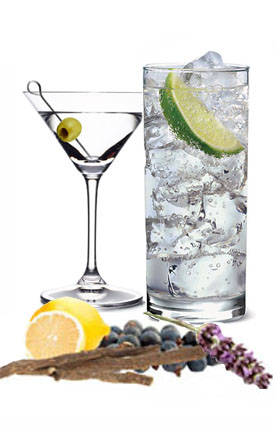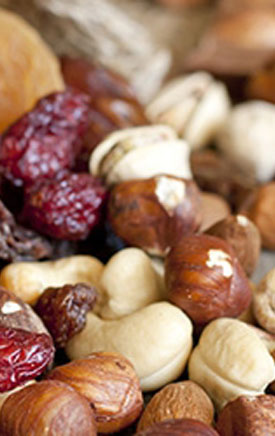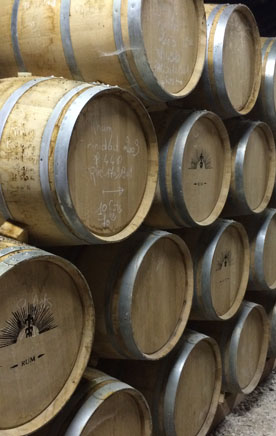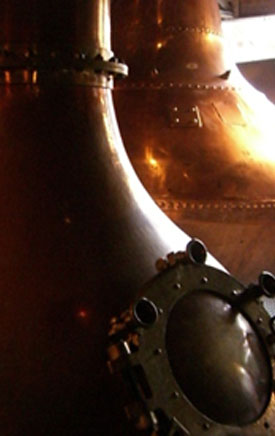- UC Davis
- Best of Friuli
- Questions About Wine
- Chocolate and Wine 101
- Vermont Cheese
- Oregon Wine Country
- Best Chianti Classico
- Best of Cahors
- Wines of the Finger Lakes NY
- Largest Wine List
- Texas Wine
- Champagne
- Puglia Wine and Land
- Best of Playa del Carmen
- Best of Central Coast California - Pt 2
- Best of Central Coast California - Pt 1
- Wine from Virginia
- Bourbon
- Best of Anguilla
- Vodka
- Tequila
- Dessert Wines
- Cognac
- Gin
- Best of Hong Kong & Macau
- Best of Sonoma
- Wines of South Africa
- Beaujolais
- Wines of Sicily
- Wines of Cyprus
- Best Vodka 2004
|
Related Links
|
||
New This Month
The Forgotten Wines of Friuli
The full name of the region is Friuli Venezia Giulia. It has less than 1 1/4 million inhabitants and sits in the north east corner of Italy with Austria to the North, Slovenia to the East, and the Adriatic Sea to the South. Almost half of Friuli (using the shortened version is a lot less confusing to Americans since many assume Venezia or Venice is part of the region and it is not) is occupied by mountains including part of the Alps. The largest cities are Udine with almost 100,000 population and the regional capitol Trieste with about 250,000 people. It ranks 17th among the 20 regions in size.
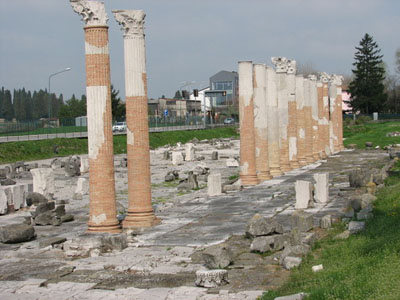
Roman ruins at Aguileia
In 181 BC the Romans founded Aquileia whose ruins have been meticulously restored and are the most important archeological sites in northern Italy. Then there were “visits” from Attila the Hun, the Lombard’s, Charlemagne, the Austrian Hapsburg’s and Napoleon, who did seem to get around. The Venetian Republic conquered Friuli in 1420 (hence the name) and finally, in 1866 most of Friuli was annexed to the Italian Kingdom. We are up to the two World Wars, most of which was fought in this area, and more swapping of territory. Finally, in 1963 Friuli Venezia Giulia was established as a region of Italy, but with many of the customs and languages of their ancestors still preserved.
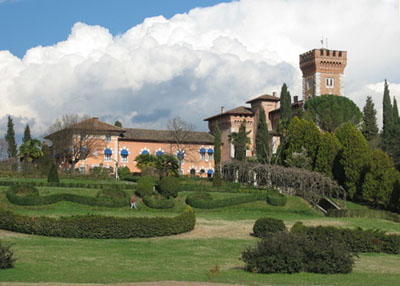
Castello di Spessa
Enough history and on to the wines. More than 60% of its wine production is white with Collio, Collio Orientall del Friuli, Friuli Grave and Friuli Isonzo four of the better known of the nine DOC zones (denominazione di origine controllata, similar to the French AOC laws). There is one DOCG Ramamdolo (the G stands for garantita or guaranteed, the highest level). Friuli’s reputation was made by mainly small wineries using the Tocai Friuliano grape variety. Because of the rules of the European community the name Tocai must be changed so as not to be confused with the Tokay or Tokaji of Hungary.
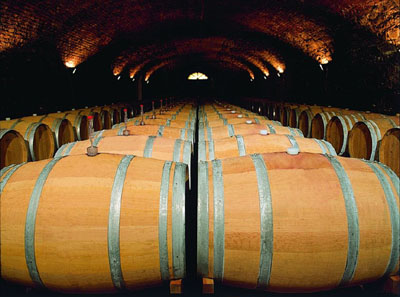
Friuli wine barrels
The Friulian style in whites favor the fresh, fruity and delicate style with very little wood aging and includes Pinot Grigio, Pinot Bianco and Chardonnay. But that is also changing as many wineries now favor the depth and complexity that occurs with blending and oak aging. The reds have been traditionally light and fruity, best consumed within a few years of the harvest. That includes Merlot, Cabernet Franc, Pinot Nero and a local favorite Refosco. But here also the blending of Cabernet Sauvignon and Merlot and aging the wine in small oak barrels has changed the style.
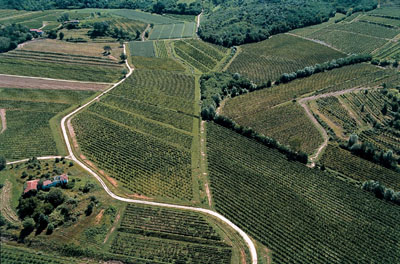
Friuli vineyards
The terraced slopes create perfect growing conditions along with the Adriatic and alpine currents. There has also been a revival of long neglected varieties including Picolit, a sweet dessert wine popular in the 1800’s. I also found Verduzzo, varietal making lighter style dessert wines; Refosco a light fruity red and the rare Pignolo and Schioppettino varieties that are drawing lots of attention from winemakers. Add to the list sparkling wines (spumante in Italian) made from Pinot Grigio and Chardonnay. Some recommended vineyards include: Castello di Spessa, Cantina Produttori Cormons, Azienda Zidarich.
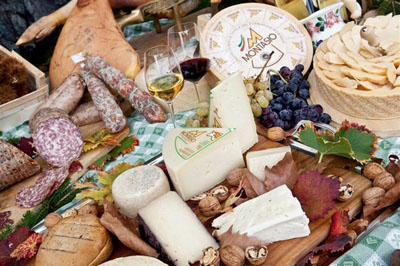
Foods of Friuli
Friuli, with its union of three culinary traditions (the Austrian, the Venetian and the Slav) is home to local food favorites such as: San Daniele prosciutto and frico (cheese cooked with potatoes and onions) often served as antipasto. First courses include: Gnocchi and risotto along with Iota, a bean, potato and sauerkraut soup of Austrian origins. Main courses include: fresh seafood from the Adriatic and meat and game from the interior. Most meals are accompanied with polenta, made from maize, and fresh produce. Most Americans are used to processed and zapped foods– so the natural breads, fresh vegetables and fruits taste differently here. For dessert, who could resist the strudels and gubana, a cake filled with dry fruits, raisins and grappa?
Why don’t Americans know more about the wines of Friuli? Perhaps there are just so many other wine regions in Italy that they already know about. Friuli wines are definitely worth discovering, again and again.
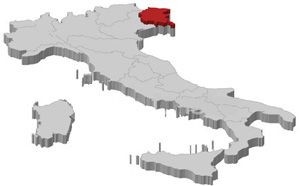
Map of Italy with Friuli highlighted
For more information:
Discover Friuli
Disclaimer: This section of the website is intended for visitors 21 years of age and older.
If you are not of legal drinking age, please exit by clicking here.
Please drink responsibly!
Comments or questions welcome, please e-mail to: Ron@TheFiftyBest.com
- UC Davis
- Best of Friuli
- Questions About Wine
- Chocolate and Wine 101
- Vermont Cheese
- Oregon Wine Country
- Best Chianti Classico
- Best of Cahors
- Wines of the Finger Lakes NY
- Largest Wine List
- Texas Wine
- Champagne
- Puglia Wine and Land
- Best of Playa del Carmen
- Best of Central Coast California - Pt 2
- Best of Central Coast California - Pt 1
- Wine from Virginia
- Bourbon
- Best of Anguilla
- Vodka
- Tequila
- Dessert Wines
- Cognac
- Gin
- Best of Hong Kong & Macau
- Best of Sonoma
- Wines of South Africa
- Beaujolais
- Wines of Sicily
- Wines of Cyprus
- Best Vodka 2004
|
Related Links
|
||



